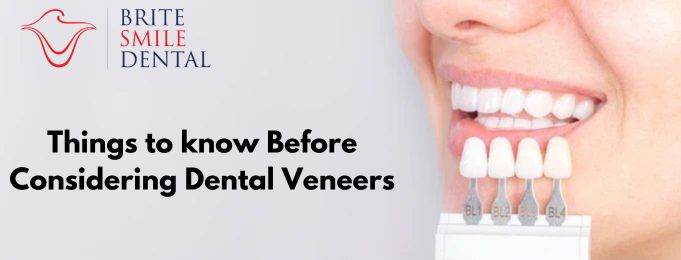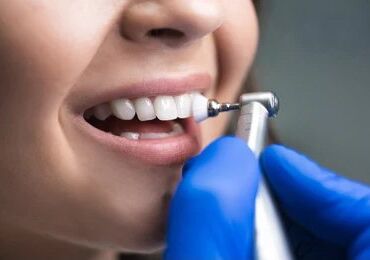Things to know Before Considering Dental Veneers
Dental veneer is a unique solution that can help you adjust the appearance of your teeth to make your smile better. These incredibly slim façade coatings are then applied to the front part of the teeth and are an excellent fit for covering chips, discoloration or even slight misalignment. Veneers are usually made of strong and resistant materials that will one day be porcelain or composite resin and they give your teeth a more natural and sleek appearance as the rest of your natural teeth. However, as with any dental treatment from Best Dentist in San Diego, there are some important things that one needs to know about veneers to determine whether they are right for him or her.
What Are Dental Veneers?
Dental veneers is thin shells place on the front of the teeth to improve their appearance. Porcelain and composite resin is the most common materials use for veneers, both designed to mimic the natural look and transparency of real teeth.
- Chips or cracks in the teeth.
- Stubborn discoloration that doesn’t respond to traditional whitening.
- Gaps between teeth.
- Irregularly shaped or small teeth.
Most patients choose to have veneers on their upper front teeth, as this is the most visible part of the mouth. Typically, six to eight veneers are applied to achieve a consistent look. Some patients may opt for just one veneer to fix a damaged tooth. However, it’s common to have multiple veneers placed, especially on the lower gums
How Do Dental Veneers Work?
Veneers are placed on the front of your teeth to cover defects and flaws. It’s important to note that veneers enhance the appearance of teeth but do not serve as structural support or fix dental issues. For example, veneers cannot repair a damaged or fractured tooth or address serious problems like cavities or gaps. They do not improve tooth function; their main purpose is to enhance the look of your teeth
Who Should Consider Dental Veneers?
They are suitable for patients who want the appearance of the teeth fixed without having to realign or place a filling. They are particularly beneficial for those with the following concerns:
- Chipped or broken teeth.
- Gaps or spaces between teeth.
- Stains that cannot be removed through professional whitening.
- Teeth that are smaller or have irregular shapes.
But still veneers are not for everyone. People that can get veneers are those with healthy teeth and healthy gums. But if you have complicated problems like periodontal disease, cavities, or enormously compromised enamel, then those should be treated prior to veneer procedures. Best Dentist in San Diego said that those individuals who usually clench or grind their teeth should also not be considered good candidates because this could cause the veneers to wear out.
Veneers vs. Crowns: What’s the Difference?
Although both veneers and crowns enhance the appearance of teeth, they serve different purposes:
- Veneers: These are minute boats that are placed on the anterior face of a tooth and to a large extent are designed to be cosmetic.
- Crowns: These fully cover the tooth giving it strength and protecting teeth that have been damaged by decay, cracks or wear.
If your tooth needs a strengthening along with the beautification, it’d be wiser to undergo a crown, because it reconstructed both the aesthetics and the work function of the tooth.
Types of Dental Veneers
There are various categories of San Diego veneers: composite veneers, crown veneers, porcelain veneers, and plastic veneers. The most common types include:
1. Composite Veneers
- Fitted and made from tooth coloured resin material COL.
- Used topically directly on the teeth at one visit.
- Cost less than porcelain but they are not as long lasting.
- Severely useful for touch-ups including gap closing or small abrasion repair.
2. Porcelain Veneers
- Made individually from high quality porcelain in a dental technology.
- Should be bonded on the tooth requiring removal of a thin layer of the enamel prior to insertion.
- Have a natural look that gives the customer a look like natural teeth.
- Nearly immune to staining and typically lasts fifteen years or more when properly maintained.
- Frequently it is more costly than the installation of composite veneers.
3. No-Prep Veneers
- Our veneers are even slimmer than the conventional ones and one may need little or no reshaping of the enamel.
- A bit less aggressive, but not effective in all the situations.
- Be temporary with an option for making it reversible in some cases.
4. Removable Veneers
- Also referred to as screw-on or temporary veneers.
- These can be removed at any time but are usually less permanent.
- Although they contribute towards enhancing the appearance of the wearer they pose some limitations in eating and speaking.
The Dental Veneer Procedure: Step by Step
Pre-Procedure Preparations
Prior to having veneers fitted, the Best Dentist in San Diego will examine your teeth and gums to determine whether it’s suitable for you. Once that has been established, a very little of the enamel will be reduced to allow room for the veneers. This step is important in order to have garments perfectly fitting the human body and feel rather comfortable. In the case of porcelain veneers, visible impressions of the individual teeth are taken and forwarded to the dental technician who creates the veneers.
For composite veneers, this step may not be necessary as in some cases, the composite veneer may be fabricated directly on the teeth during your visit.
The Procedure Itself
When it comes to custom veneers, your new veneers are prepared and you will see them when your dentist evaluates the fit, the shape, and the color of your veneers in accordance with your natural teeth. Though the veneers are very thin, they will then cement them on to your teeth and use a special light to set the cement. The dentist may also make other minor adjustments in order to make sure that your bite feels normal.
As after the operation, no restrictions are placed on the patient, however you cannot eat until the feeling of the anesthesia passes.
Caring for Your Veneers: Maintenance and Longevity
San Diego veneers care advice is relatively easy and should be in harmony with other kinds of care commonly practised on your teeth. Some key maintenance tips include:
- Clean your teeth with fluoride and non-whitening toothpaste and a soft-bristled brush once in the morning and once before night.
- To avoid gum diseases and plaque build up between the teeth use floss daily.
- Do not chew on hard items such as ice, nuts or hard candy and other similar items that have the tendency to break or chip the veneer.
- Do not apply your teeth to opened the containers or packaging.
- Take time to go to your dentist for an examination and to have your teeth cleaned once in a while.
In some cases if one tolerates the pain one can still use porcelain veneers; however since they are stain-resistant, one should avoid taking products such as coffee, tea, and red wine which affect the other teeth and at times the veneers themselves.
Pros and Cons of Dental Veneers
Pros:
- Aesthetic Enhancement: Veneers are quite effective when it comes to makeover of smiles.
- Natural Appearance: The crowns most nearly approach the appearance of natural teeth.
- Stain Resistance: Porcelain veneers are closely protected from staining.
- Durability: Porcelain veneers have been reported to last up to 10 to 15 years depending on their maintenance.
- Low Maintenance: Not much attention needs to be paid to it and you just have to brush your teeth regularly.
Cons:
- Permanent Enamel Removal: A small amount of enamel must be etched for veneer placement permanently.
- Non-Reversible: Once set most veneers cannot be replaced without having to redo the entire procedure of the other teeth.
- Tooth Sensitivity: This is because, through the process of enamel removal, you find that you are so sensitive to hot and cold foods.
- Risk of Detachment: Nonetheless, veneers themselves will occasionally become loose or detached from the teeth.
- Cost: Like any other cosmetic surgery, the placing of veneers is not generally a thing that would be catered for by the insurance service. You can find more about cost of veneers at Brite smile Dental.
Are Veneers a Permanent Solution?
Veneers are typically thought to be a worthy long term approach and porcelain veneers can last roughly 10 to 15 years. Nonetheless, no-prep veneers are comparatively more provisional and are in some situations erasable. The duration of veneers varies depending on issues to do with dental hygiene, and a person’s diet thereby highlighting the kind of veneers used. In order to make them last as long as possible proper dental hygiene should be observed, and certain practices which are the root cause of some issues should be avoided such as biting nails or trying to open something with our teeth.
Conclusion
Indeed, there is no better way than choosing Brite Smile Dental the best San Diego veneers clinic, especially if you have the desire and have the need to change the appearance of your teeth. However, you must consider one conclusion and pros/cons with your dentist to decide whether or not veneers meet your exact cosmetic dental requirements. If well taken care of, veneers can come back with a permanent solution with Brite Smile Dental towards changing your smile line. Book your appointment now!



